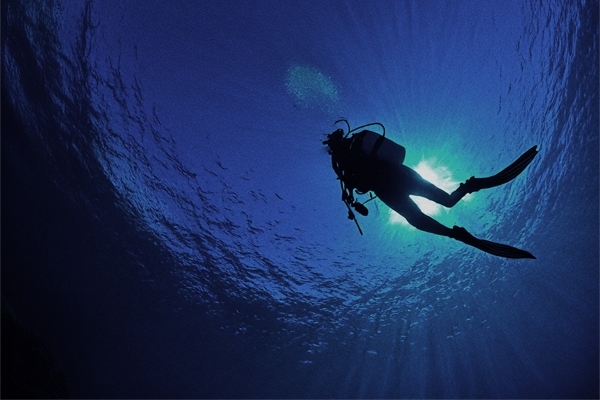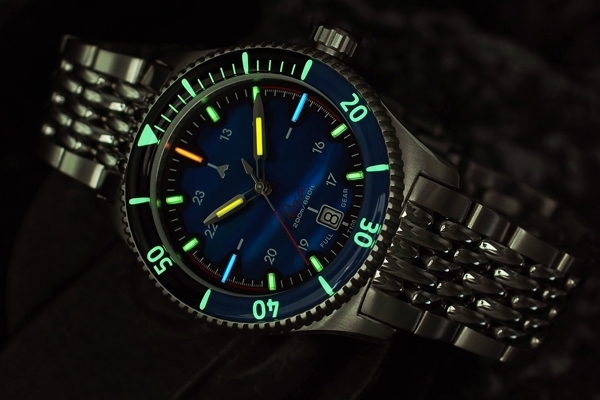
Most of us see the words “Water Resistant” on a watch case and assume it means we can swim, shower, or dive without worry. But the truth is that water resistance in watches is one of the most misunderstood specifications in horology. Knowing what those numbers actually mean can help you protect your timepiece — and make sure you’re wearing the right watch for the right occasion.
How Water Resistance Is Measured
Water resistance is usually expressed in meters (m) or atmospheres (ATM), but these figures don’t necessarily describe how deep a watch can go. Instead, they refer to the amount of pressure the case can withstand under controlled laboratory conditions. A 30-meter rating, for example, doesn’t mean you can dive 30 meters underwater — it only means the watch can handle splashes or rain.
A 50-meter watch might survive a shower or a quick swim, while a 100-meter model can accompany you snorkeling or during most water sports. Serious diving watches start at 200 meters and above, offering the kind of protection built for real underwater adventures. The important thing to remember is that these ratings represent ideal conditions; in the real world, heat, motion, and time all affect how well a watch resists water intrusion.
The Engineering Behind Water Resistance
Behind every rating lies an intricate combination of design and precision engineering. The case structure, the quality of gaskets and seals, and even the way the crown and caseback fit together all play critical roles. Tiny rubber gaskets create the barrier that keeps water out — but they can dry, harden, or compress over the years. Sudden temperature changes, such as going from a warm shower to cold air, can also cause materials to expand or contract, allowing moisture to sneak in.
For these reasons, it’s a good idea to have your watch pressure-tested every year or two, especially if it frequently encounters water. Even the toughest dive watches benefit from fresh seals and a checkup to ensure the crown and gaskets are doing their job.
Built for Depth and Durability
Diving watches, like FullGear’s Orca Series, are designed to go far beyond casual water resistance. With ratings starting at 200 meters, these watches are made for true reliability in wet and high-pressure environments. A screw-down crown, reinforced caseback, and double-sealed gaskets all work together to create a robust seal against water ingress.
While some dive watches include helium escape valves — a feature used by professionals working in deep saturation dives — for most people, it’s the reassurance of strength that matters most. Knowing your watch can take a beating, whether you’re swimming, hiking in the rain, or caught in a storm, adds confidence to every wear.

The Engineering Behind Water Resistance
Behind every rating lies an intricate combination of design and precision engineering. The case structure, the quality of gaskets and seals, and even the way the crown and caseback fit together all play critical roles. Tiny rubber gaskets create the barrier that keeps water out — but they can dry, harden, or compress over the years. Sudden temperature changes, such as going from a warm shower to cold air, can also cause materials to expand or contract, allowing moisture to sneak in.
For these reasons, it’s a good idea to have your watch pressure-tested every year or two, especially if it frequently encounters water. Even the toughest dive watches benefit from fresh seals and a checkup to ensure the crown and gaskets are doing their job.
Built for Depth and Durability
Diving watches, like FullGear’s Orca Series, are designed to go far beyond casual water resistance. With ratings starting at 200 meters, these watches are made for true reliability in wet and high-pressure environments. A screw-down crown, reinforced caseback, and double-sealed gaskets all work together to create a robust seal against water ingress.
While some dive watches include helium escape valves — a feature used by professionals working in deep saturation dives — for most people, it’s the reassurance of strength that matters most. Knowing your watch can take a beating, whether you’re swimming, hiking in the rain, or caught in a storm, adds confidence to every wear.

Keeping Your Watch Water-Ready
Even the best-built watch needs a bit of care. Always make sure the crown is fully tightened before contact with water, and rinse your watch in fresh water after swimming in the ocean or a chlorinated pool. Avoid pressing any buttons while submerged unless your model is specifically designed for it, and remember that routine maintenance is essential to preserving its resistance over time.
The Real Meaning of “Water Resistant”
No watch is truly waterproof - and that’s okay. What matters is that it’s built to perform within its design limits. With smart construction, quality materials, and a little care, your timepiece can accompany you through years of adventures, both above and below the surface.
Whether you’re drawn to a rugged field watch or a professional-grade diver, understanding water resistance helps you choose the right companion for your lifestyle. After all, a well-built watch doesn’t just tell time - it endures it.
Explore our water-resistant collections
>FullGear Orca Series<
Because a watch built for the elements should never fear them.



